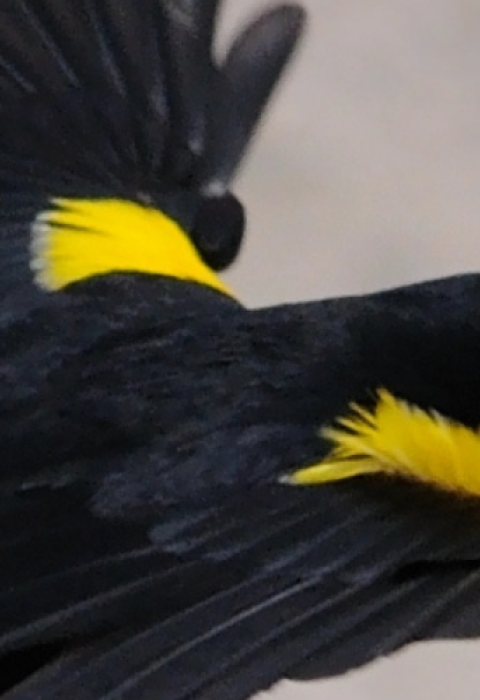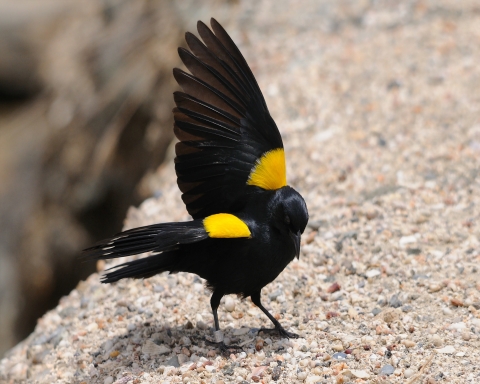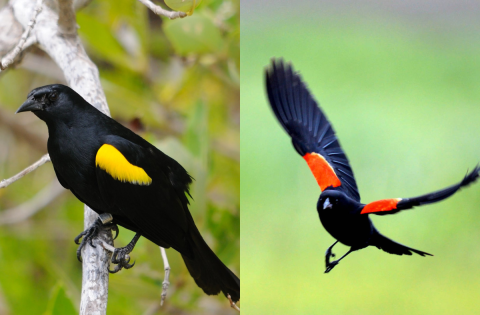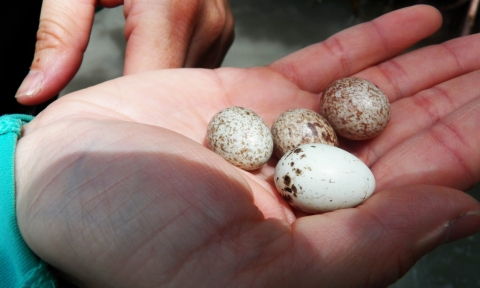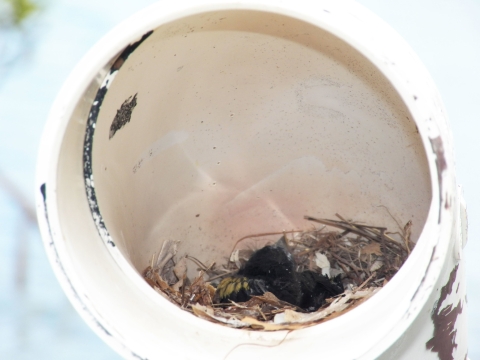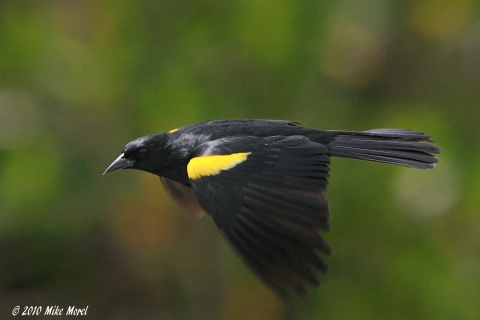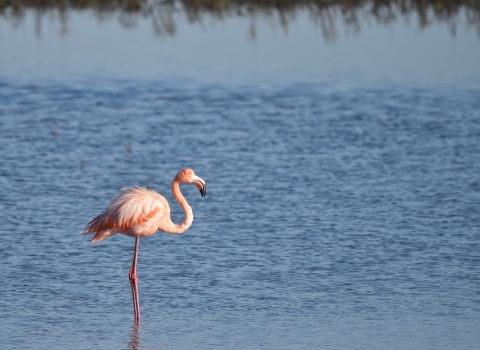In an ode to 1980s fashion, this bird is rocking a bold look. With black plumage and striking yellow patches on their shoulders, the yellow-shouldered blackbird literally lives up to its name.
Identifying Features
Depending on where you live, you may be more familiar with the yellow-shouldered blackbird’s relative: the red-winged blackbird. While similar in form, the two species can be physically differentiated by their epaulets.
Yellow-shouldered blackbirds have entirely yellow epaulets, while red-winged blackbirds have red epaulets lined with yellow. Epaulets refer to the brightly colored feathers on the bird’s shoulders.
In addition to physical differences, these species have a major geographic difference. Yellow-shouldered blackbirds are endemic to, or only found in, the island of Puerto Rico. In contrast, the range of red-winged blackbirds spans North America and Central America, and they do not occur in Puerto Rico.
Conservation Status
Yellow-shouldered blackbirds were listed as endangered under the Endangered Species Act (ESA) in 1976 and their current distribution includes southwestern (municipalities of Cabo Rojo and Lajas) southern (municipality of Salinas) and eastern (municipality of Ceiba) Puerto Rico, and the adjacent Mona and Monito islands. As of 2023, the island-wide yellow-shouldered blackbird population was estimated to be approximately 600-700 individuals.
Their primary stressors include habitat loss and degradation due to human activities, opportunistic predators (e.g., dogs, cats, rats), a restricted (localized) distribution, low population numbers, climate change climate change
Climate change includes both global warming driven by human-induced emissions of greenhouse gases and the resulting large-scale shifts in weather patterns. Though there have been previous periods of climatic change, since the mid-20th century humans have had an unprecedented impact on Earth's climate system and caused change on a global scale.
Learn more about climate change , hurricane impacts, invasive species invasive species
An invasive species is any plant or animal that has spread or been introduced into a new area where they are, or could, cause harm to the environment, economy, or human, animal, or plant health. Their unwelcome presence can destroy ecosystems and cost millions of dollars.
Learn more about invasive species , and nest parasitism by shiny cowbirds.
Shiny cowbirds were first recorded in Puerto Rico in 1955. Originally native to South America, this species expanded their range by island hopping. Upon their arrival in Puerto Rico, they hit yellow-shouldered blackbird nests with force. Cowbirds are obligate brood parasites, meaning they lay their eggs in the nest of other birds and provide no parental care. This situation often results in the death of the host bird’s eggs and hatchlings.
To combat the shiny cowbirds, artificial nesting structures have been installed in yellow-shouldered blackbird nesting areas.
Something temporarily or permanently constructed, built, or placed; and constructed of natural or manufactured parts including, but not limited to, a building, shed, cabin, porch, bridge, walkway, stair steps, sign, landing, platform, dock, rack, fence, telecommunication device, antennae, fish cleaning table, satellite dish/mount, or well head.
Learn more about structure made of PVC. Photo by Danna Liurova/USFWS YAP.
Biologists monitor artificial nest structures on a weekly basis, check on the status of yellow-shouldered blackbird chicks, remove any cowbird eggs found, and treat nests for parasites. Eventually, new nest structures will be installed that are equipped with sensors to monitor moisture and temperature, and with motion cameras to help determine causes of nests failure.
Apart from the nest parasitism, biologists are working hard to implement additional conservation actions that will benefit this imperiled species. They are developing habitat restoration plans for the mangroves that the blackbirds live in, assessing the genetic diversity of the existing blackbird populations, and working towards creating a head start program.
Where can I find yellow-shouldered blackbirds?
If you’re hoping to add the yellow-shouldered blackbird to your birdwatching life list, a trip to Puerto Rico is in order! These birds have been observed at the following National Wildlife Refuges:
- Cabo Rojo National Wildlife Refuge: Located along the southwest coast of Puerto Rico, one of this refuge’s primary objectives is to restore and enhance the population of the yellow-shouldered blackbird.
- Laguna Cartagena National Wildlife Refuge: This refuge is one of the most important freshwater habitats for migrating and resident aquatic birds in Puerto Rico.
Yellow-Shouldered Blackbird Photo Contest
As part of our Bird of the Month series, we invite you to submit your photos of yellow-shouldered blackbirds in a photo contest.
**In the file name of your photo, please include your first and last name, contact email address, and the location where the photo was taken. If these components are missing, we will have no way of contacting you if you win.**
Submissions will be judged by a panel of U.S. Fish and Wildlife Service employees. Once a winner is selected, they will be contacted via email and asked to sign a photo release form. This form protects the photographer's rights, ensures proper credits are given, and grants the U.S. Fish and Wildlife Service permission to share the photo on our social media channels. Please monitor your junk/spam folders towards the end of the month in the event that we reach out and our email lands there.
The winner will be announced publicly near the end of each month on our Southeast Regional Facebook and X (formerly known as Twitter) platforms.
A photo contest will occur each month for each featured bird species. At the end of 2024, all twelve winning photographs will be shared on our regional social media accounts.
Submit your original photos of yellow-shouldered blackbirds here!
